Have you been wondering, “should I move to Australia,” but aren’t sure if it’s the right choice? Australia offers great job options, an impressive healthcare system called Medicare, and sunny weather perfect for outdoor adventures.
In this guide we’ll share 21 key insights that help you decide if moving to Australia makes sense for you in 2025. Keep reading to find out more!
Key Takeaways
Australia has impressive job growth, and the minimum wage, around $18.12 USD per hour, beats the amount offered by many other countries—great news if you want to save up or enjoy life more comfortably.
Medicare gives Australian residents nearly cost-free healthcare and ranks third best worldwide—a big plus since you’ll avoid hefty medical bills.
Work-life balance is excellent there, and Australians average just around 32.29 working hours per week, freeing up plenty of time for beaches, hiking, or simply relaxing outdoors.
Housing costs really depend on where you settle; big cities like Sydney and Melbourne can get pricey, yet smaller cities such as Adelaide offer more reasonable rentals, averaging about AUD 1,670 a month.
Planning for a visa takes some thought, since different visas suit different situations—Student Visas, Family Sponsorship Visas, and Skilled Worker Visas are common pathways.
Table of Contents
Reasons to Move to Australia
Australia offers more than just stunning beaches and cute koalas. The country boasts amazing job growth, top-notch healthcare, and a work culture that values your personal time.
Strong Economy and Job Opportunities
With a strong and stable economy, Australia offers excellent opportunities for women looking to advance their careers. Its job market is booming across sectors including tech, healthcare, finance, mining, education, and creative industries.
Major cities like Sydney, Melbourne, and Brisbane host global firms eager to hire talented professionals. This demand for skilled workers boosts job opportunities and salaries alike.
Even the minimum pay rate is impressive, at around $9.54 USD per hour after taxes—much higher than comparable wages in Ireland and the UK. Earning more not just boosts your savings potential but allows for an improved lifestyle, with more personal freedom and financial security.
The Australian job market opened doors I never found at home. I doubled my salary and finally achieved the work-life balance I’d been chasing for years.
Australia’s economy creates real possibilities for financial independence at every step in a woman’s career. Big cities draw international companies keen to find and retain capable talent across various industries.
Personally, I’ve watched numerous female friends flourish after relocating, especially in education and healthcare roles. I’ve also known lots of Indian and Pakistani workers who relocated using a partner Visa in Australia, accepting lower wages and helping employers minimize their staffing expenses.
Favorable exchange rates often add to your financial advantage too—your earnings go further while your career develops in this promising market.
High Quality of Life and Safety
Australia isn’t just great for jobs—it also offers an amazing daily lifestyle. The country ranks 11th globally for quality of life, making it an attractive choice for women after higher living standards.
Recent research ranks Australia as the world’s second-safest country, which is especially reassuring for women moving solo or relocating with family. This sense of safety covers both bustling cities and peaceful country areas, giving you comfort wherever you decide to live.
Australian cities have clean streets, low crime rates, and reliable public safety practices. The healthcare system ranks third globally, and Medicare covers residents universally. That means you get quality medical care without huge hospital bills common elsewhere.
Outdoor enthusiasts will also love Australia’s climate, perfect for year-round activities—from surfing at iconic spots like Bondi Beach, to hiking through the scenic trails in the Blue Mountains or Snowy Mountains.
The country’s blend of city comforts and stunning nature creates a space where women can flourish and feel fulfilled.
Fantastic Healthcare System (Medicare)
Safety in Australia isn’t just about low crime—it’s also about healthcare. The country’s Medicare system gives women reliable and high-quality medical care, often better than care elsewhere.
Australia’s healthcare scores high, with a Universal Health Coverage index of 89%. This public insurance covers most medical expenses, usually for little or nothing. Hospital stays won’t cost you a cent, and medicines come cheap, thanks to government help.
About three years ago, I moved to Australia and experienced this benefit firsthand. An emergency room visit here cost me nothing at all—in the U.S., it would’ve set me back thousands.
Medicare lets women handle their healthcare concerns without financial stress. Private health insurance is also available, offering faster specialist visits and more treatment options—often at lower costs compared to American plans.
The Australian healthcare system serves permanent residents and some specific visa holders too. Even if you’re here temporarily, on something like a working holiday visa, you can still get essential healthcare.
This combination—public healthcare that’s nearly free and private plans that don’t empty your wallet—makes Australia especially attractive for women who care about their health.
Work-Life Balance and the Laid-Back Lifestyle
Australia doesn’t just offer an excellent Medicare system—it also boasts a balanced lifestyle that women often appreciate. In fact, Australia ranks eighth globally in the Life-Work Balance Index 2025, scoring an impressive 72.10.
The easy-going culture here places as much value on personal downtime as it does on professional life. Australians typically work only about 32.29 hours a week, leaving plenty of room for family time, hobbies, or simply kicking back and relaxing.
Life isn’t meant to be all work and no play. Australia gets that right.
Financial benefits also help to support this relaxed lifestyle. Australia’s minimum wage is currently $18.12 USD—higher than any other country included in the study. This means less stress about finances and more freedom to enjoy daily life.
For many women, this factor plays a key role when choosing a new home. With good wages, shorter workweeks, and a culture that genuinely respects personal space, Australia makes an appealing choice for women interested in a higher quality of life.
Incredible Weather and Outdoor Activities
Sunny Australian weather means endless outdoor adventures all year. Mild winters and warm summers near the coast allow easy beach trips almost anytime. Last summer, I checked out several of Australia’s 10,000-plus beaches—and honestly, I loved how clean and quiet most beaches were.
Australian weather differs by area, but most cities see sunshine more often than rain.
The landscape of Australia offers many ways to enjoy nature, far beyond beaches alone. Over 500 national parks, such as Kakadu and the Daintree Rainforest, provide plenty of fresh places to explore.
Many women I’ve talked to enjoy spending time outdoors—hiking trails, swimming in waterfalls, or spotting wildlife. You could go trekking in lush rainforests, skydiving above incredible scenery, or snorkeling along coral reefs.
With about 25,000 kilometers of shoreline, surfers get endless spots to ride waves without dealing with crowds.
Higher Minimum Wage and Financial Benefits
Australia provides appealing financial benefits many women appreciate. The economy maintains a high minimum wage, letting you earn solid pay even in entry-level jobs. From July 1, 2025, minimum award wages will rise by 3.5%, giving you extra money for savings or leisure.
This increase helps manage daily expenses, making life less stressful overall. Medicare, Australia’s universal healthcare system, significantly cuts medical costs—saving you from large hospital bills.
Although Sydney and Melbourne have steep housing prices, smaller cities and rural towns offer affordable living. Your money often goes further than expected; grocery shopping and dining out cost the same or even less than in major UK cities (vs moving to London).
Plus, many women value Australia’s flexible work visas, offering clear pathways toward permanent residency.
Outside of wages, Australians enjoy a balanced lifestyle, leaving plenty of room to explore the outdoors and beautiful natural surroundings.
Cultural Attractions in Australia
Australia boasts a rich cultural scene that goes beyond the famous Opera House. You’ll find a mix of Aboriginal traditions, modern arts, and global influences across the country.
Diverse Food Scene
The Australian food scene offers an exciting blend of global flavors that’ll surprise you. Fresh, local ingredients shine everywhere—from lively cafes in big cities, to cozy spots in tiny towns.
Last year, I checked out the Melbourne Food and Wine Festival and went to the “World’s Longest Lunch”, where dining tables stretched along city streets. The menu blended Asian spices with European techniques, topped off with native Aussie ingredients—it was unlike anything I’d tasted before.
You’ll discover prize-winning spirits too, like those from local distilleries Four Pillars and LARK, each offering distinct Aussie twists. Sure, cost of living can feel steep, but the incredible food makes it worthwhile.
Plenty of places highlight Indigenous cooking traditions, some dating back thousands of years. With an eVisitor visa, there’s enough time to explore local markets, wine areas, and year-round food festivals—turning your visit into a delicious adventure.
Iconic Wildlife and Ecosystems
Australia has wildlife you won’t see anywhere else on the planet. Over 80% of its animals and plants live exclusively in this one country—it’s a nature lover’s dream. Sure, kangaroos and koalas tend to get most attention, but Australia also hosts wonders like the Fitzroy River Turtle.
This little turtle can hold its breath underwater for up to 21 days—pretty incredible, right? Another impressive animal is the Southern Cassowary: huge, flightless, and able to jump five feet high and run up to 31 mph.
Wildlife here develops unique skills to survive in their specific environments.
Australia isn’t just a country; it’s an entire ecosystem unlike anything else on our planet.
Sadly, nearly one in three of Australia’s special mammal species now faces extinction. Habitat destruction and invasive predators threaten wildlife unique to Australia, animals that spent millions of years evolving separately from the rest of Earth’s species.
Across the continent, climates shift dramatically—from lush tropical rainforests to dry, dusty deserts—giving rise to many different types of ecosystems. Women, especially, often find strong emotional connections with these natural environments, whether seeing tiny fairy penguins shuffle onto the shore at sunset or glimpsing elusive platypuses swimming gently along crystal-clear streams.
Scientists also microchip many animals here, carefully tracking their movements and ensuring their safety. Australia clearly puts real effort into protecting its amazing wildlife heritage.
Vibrant Art and Music Communities
Beyond the incredible wildlife, Australia boasts exciting music and art scenes to inspire your creative side. Music is a big part of everyday Aussie life, and locals deeply value live performances.
Young Australians often attend concerts not just to enjoy good music—but also to improve their emotional well-being and strengthen their friendships. I personally saw this vibrant scene in Sydney, where small venues hum with energy night after night.
The music community feels friendly, open-hearted, and totally welcoming to newcomers.
Social media, along with big festivals, are great ways to catch fresh talent on the Aussie music scene. The supportive attitude toward homegrown artists creates an uplifting atmosphere for performers and fans alike.
Living in Australia puts you right at the doorstep of indie rock gigs in Melbourne or lively outdoor concerts near Perisher during the ski season. Australia’s art landscape shares that same creative spark—with vibrant galleries, colorful street art, and cultural festivals celebrating both historic traditions and modern Australian vibes.
Passion for Sports and Outdoor Events
Australia has a thriving arts community, but it’s the deep passion for sports that truly makes it special. Aussies cherish sports deeply—rugby matches, cricket games, and Australian Rules Football (AFL) regularly draw massive crowds nationwide.
In fact, the Melbourne Cup horse race is such a big deal, it even gets its own public holiday. Sporting events provide women newcomers excellent opportunities to meet people and create friendships.
The upcoming British & Irish Lions tour in 2025 is a perfect example of how sports can unite entire communities. Australia’s relaxed attitude about work hours allows plenty of free time to play local sports or attend exciting matches.
Thanks to Australia’s warm weather, outdoor activities are accessible throughout the year—though summertime heat waves can sometimes become extreme. Locals often get together for weekend matches, so joining a sports group is a fantastic way for women moving here to quickly build connections and explore Aussie culture.
Challenges of Moving to Australia
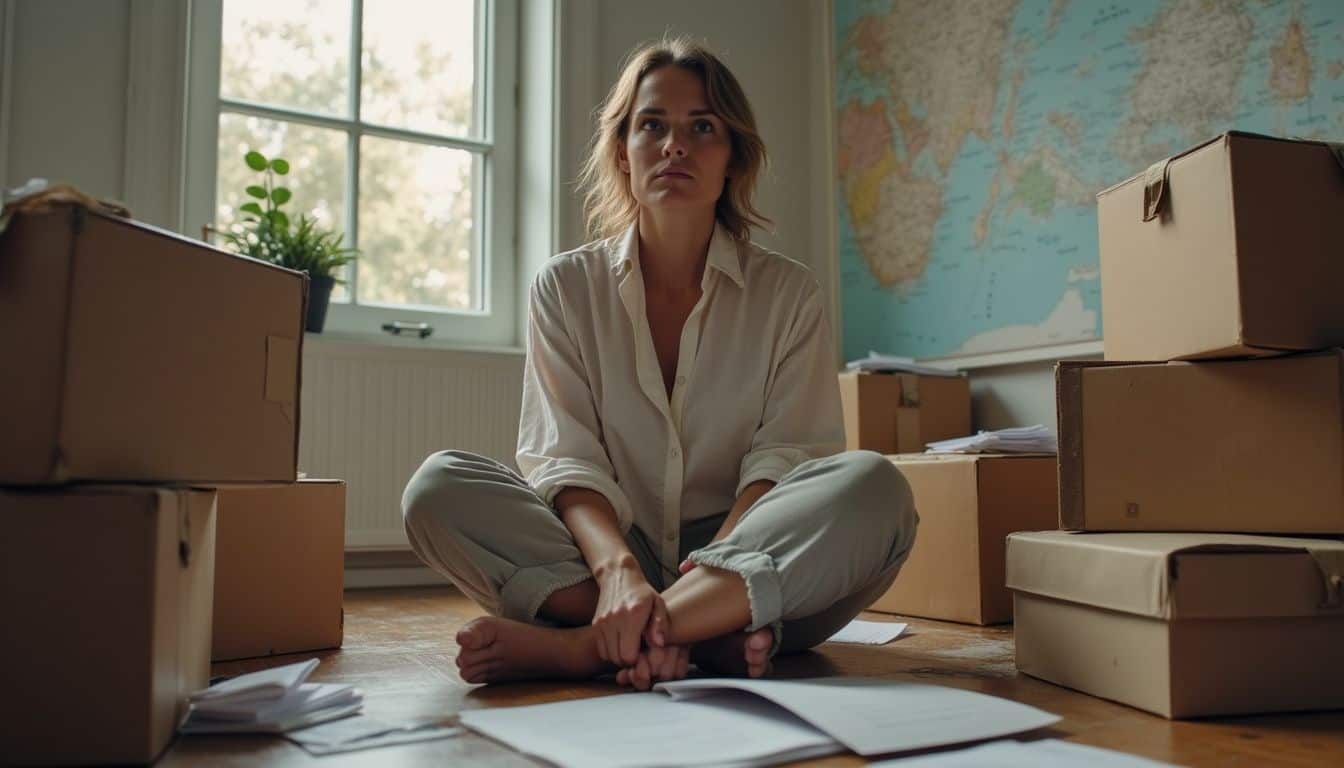
Moving to Australia comes with real hurdles that might test your patience and wallet. The strict visa rules, sky-high city rents, and being so far from home can make you think twice about your plans.
High Cost of Living in Major Cities
Living in Australian cities can hit your wallet harder than you’d think. Sydney tops the charts, with monthly expenses around AUD 1,746—even before adding rent. Housing alone drains the budget quickly; shared apartments can cost roughly AUD 650, while renting a family home jumps to AUD 3,759 each month.
I lived in Melbourne for three years, and rent took about half my monthly paycheck. The mortgage payments shocked me compared to what I used to pay at home. Daily expenses pile up fast, too—groceries, public transit, and even that occasional cup of coffee can easily strain your budget.
Plus, foreign exchange rates don’t often do you any favors in those early days, making the first months even tougher financially.
Costs vary widely between cities across Australia. You’ll likely spend anywhere from AUD 1,900 to AUD 5,200 each month, depending on your chosen city and lifestyle habits. Adelaide is easier on your finances—basic monthly expenses there run around AUD 1,670—but settling permanently in Sydney can seriously stretch your limits.
Even Australian residents often pick smaller towns or suburban areas, simply to cut down on high living expenses. Your choice of lifestyle will determine how comfortably you can live in this stunning yet pricey country.
Next up, it’s important to understand Australia’s visa procedures and requirements before planning a move.
Visa Requirements and Processes
Moving to Australia isn’t cheap, especially in big cities—but that’s just part of it. Getting an Australian visa also involves careful prep and a bit of waiting. You’ll have to gather key documents like your passport and birth certificate right from the start.
Selecting the correct visa matters, since it affects your plans later on. For instance, Australia provides Student Visas for folks hoping to study there. Family Sponsorship Visas are handy if you already have relatives living in the country.
Skilled Worker Visas exist specifically for people who have job skills the country needs. Each choice comes with separate rules, fees, and processes you must follow closely.
Sorting your finances out ahead of time makes the whole move less stressful. You’ll want enough savings for flights, housing deposits, and daily living costs after arrival. Permanent residency takes patience and careful visa selection—you’ve got to meet every single requirement.
Australia’s immigration policies shift pretty frequently, so always double-check current guidelines before applying. Certain visas might even charge you an extra levy or additional fees.
And if your stay in Australia is short, choose something quicker, like a visitor visa or an Electronic Travel Authority (ETA)—those processes move faster than long-term visa options.
Distance from Other Countries
Once you handle your visa paperwork, there’s another thing left—Australia’s well-known distance from everywhere else. A flight from London to Sydney usually lasts just under 24 hours, with layovers in cities like Dubai or Singapore.
As someone from abroad planning to become an Australian citizen, that long distance might seem intimidating at first. At first, I worried about losing touch with my family in Europe—but modern technology really shrinks that gap, keeping you close far easier than you’d expect.
Because Australia is set apart from most other countries, planning trips early becomes necessary. This isolation directly impacts things like foreign currency exchanges and overseas shipping prices.
On the flip side, many women discover a surprising benefit to Australia’s isolation. It helps form a unique local culture and lifestyle, encouraging tight-knit relationships in your own community.
Sure, overseas travel stays possible—but Australia’s natural wonders, wildlife, and sunny climate become even more special thanks to this geographic separation.
Adapting to Australian Slang and Humor
Australian slang and humor can seem totally foreign at first. Locals may casually call you “mate”, or mention their “arvo” plans—leaving you puzzled until finding out it just means afternoon.
I moved to Sydney about a year ago, and learning these phrases helped me build genuine friendships with neighbors. Aussie humor often involves friendly teasing and banter, signaling acceptance instead of rejection.
Many women discover common expressions like “fair dinkum” (genuine) and “no worries” (it’s fine) make daily interactions smoother and easier.
Adjusting to Aussie jokes is essential for fitting into social groups and workplace teams. Cultural experts highlight humor as central to how Australians bond and communicate every day.
My coworkers often toss around silly nicknames or funny stories during lunch, creating a friendly, relaxed mood. Casual humor reflects Australia’s easygoing culture, yet it may take time to feel comfortable if your background is more formal.
Getting familiar with local slang helps you form deeper connections throughout the country, known for incredible wildlife and its distinct climate.
Things to Consider Before Moving
Before you pack your bags for Australia, you need to think about key factors like climate, housing costs, city choice, and local rules – read on to learn what makes each region unique and how to pick the perfect spot for your new Aussie life.
Understanding Climate Variations
Australia’s climate changes dramatically from north to south. Up north, the weather is tropical—with clear wet and dry seasons. In southern cities, you’ll see all four seasons clearly: spring flowers, warm summers, crisp fall days, and some very chilly winters.
I spent three years living in Melbourne, and my closet had everything from breezy summer dresses to heavy winter coats. Daily temperatures sometimes spike above 40°C (104°F)—and according to scientists, days could reach a blistering 50°C (122°F) by 2040.
Hot days offer ideal beach weather, sure… but they also bring serious health hazards.
Australia, with its thin ozone layer, experiences stronger UV rays compared to most other countries. I learned my lesson fast, slathering sunscreen generously—even on cloudy afternoons—after getting badly sunburned once.
Bushfires pose another tough challenge for Australia’s climate. Each year, more than 50,000 fires burn through the country, filling skies with smoke and causing poor air quality that can linger for weeks.
Women considering a move down under should look closely at their target city’s climate and pack clothes suitable for local conditions.
Researching Housing and Living Costs
Housing expenses in Australia differ quite a bit, making research important before picking a home. Melbourne offers a cost of living that’s about 34% cheaper than London—around $2,266 per month there, compared to $3,029 in the UK capital.
Big city locations, like central Sydney, can quickly drain your wallet. But suburban neighborhoods and regional towns usually offer cheaper housing options.
I lived in Brisbane myself for three years, choosing a spot just 15 minutes outside the city center. By doing that, I managed to cut my rent costs by close to 40%. Planning your permanent residency should definitely involve exploring housing costs across different Australian cities and towns.
Plenty of rental websites let you easily check and compare neighborhood prices. Comparing costs this way makes setting up a practical budget for life in Australia much simpler.
Choosing the Right City or Region
Australia has plenty of living options, perfect for different lifestyles and personal goals. Big cities like Sydney, Melbourne, and Brisbane offer strong job markets, but they miss out on some valuable perks found in smaller towns.
For instance, regional areas give international graduates—especially women—an additional two-year extension on post-study work visas. Career choice is another key factor. Major urban centers offer more job openings, but competition can feel stiff.
Smaller towns, on the other hand, can help newcomers easily join local groups and build closer community connections. Immigration policies also change from place to place, so take a little extra time to check the specific rules in the area you’re considering.
Australia’s climate varies widely—from tropical heat up in Darwin to cooler, breezy weather in Tasmania—so pick a location that feels comfortable to you.
Familiarizing Yourself with Local Laws
Some Australian laws can be quite unexpected. Traffic rules require you to drive on the left side, and jaywalking can cost you a $70 fine—yep, pretty steep. Each state sets its own driving regulations, so check the local road rules, or you might end up with unwanted fines.
An international driver’s license is fine temporarily, but eventually, you’ll need to get an Australian license to continue driving legally.
Immigration guidelines here stay pretty strict, especially about items you bring in. Biosecurity rules closely monitor personal belongings and pets entering Australia—many items need checks or special permits.
Some pets even need microchips before they can enter the country. Visitor visas, too, often come with specific conditions about allowable items.
Smoking laws here rank among the toughest on Earth. Plenty of public places forbid smoking altogether, and breaking those rules can land you serious fines. Before shipping anything to Australia, always double-check current restrictions to steer clear of trouble at customs.
Knowing these details ahead of time can make your move easier and help avoid expensive slip-ups. Now, let’s cover some handy tips to help you smoothly get your work or study visa approved.
Tips for a Smooth Transition
Moving to Australia takes smart planning and a step-by-step approach. Getting your visa sorted early and learning about daily life will make your move much smoother.
Getting a Work or Study Visa
Australia has fantastic visa opportunities for women hoping to live, work, or study abroad. For British citizens, good news just arrived—Working Holiday Visas are now open up to age 35, five years beyond the previous limit.
Even better, there’s no longer a farm-work requirement to renew this visa. Those planning to study can apply for a Student Visa (Subclass 500). It allows you to work up to 40 hours every two weeks while you complete your degree.
During my time at Melbourne University, this flexible schedule fit perfectly with my classes and lifestyle.
Graduating students can also apply for the Temporary Graduate Visa (Subclass 485), granting full work rights from 18 months to 4 years, depending on your qualification level. This visa option helped me build key career skills, while giving me plenty of chances to see Australia’s beaches, mountains, wildlife, and more.
Australia’s immigration policies have become friendlier in recent years, opening clearer pathways to permanent residence for qualified workers.
Preparing for the Australian Lifestyle
Life Down Under blends outdoor adventures and a laid-back pace you might find new and refreshing. Pack light, breathable clothes like cotton for the hot days, but also toss in some warmer layers, since nights can get a bit cool.
The Aussie sun hits hard—put sunscreen, hats, and sunglasses high on your packing list. Locals love staying active, spending free time at stunning beaches or wandering through beautiful national parks.
You’ll see fewer smokers out and about, thanks to strict laws limiting smoking areas across the country.
Sorting out your financial details early makes settling in smoother and hassle-free. Consider opening an Aussie bank account online before getting there, which simplifies handling money later.
Booking flights months ahead can significantly cut costs, especially during peak travel seasons. Public transportation around major cities is reliable and convenient, meaning a car might not be necessary immediately.
Immigration rules change frequently, so always check visa and residency requirements before planning your move. Pets usually need microchips to enter the country, and wildlife protection laws are taken very seriously, keeping unique animals and nature safe.
Building a Community and Making Friends
Building friendships in Australia takes patience, but that effort brings valuable relationships. Research shows that forming a close friendship typically takes around 200 hours of interaction.
After my move to Sydney, joining local sports clubs significantly improved my social life. Australia’s active economy supports various group events, giving women great chances to connect over common interests.
Try apps like Bunchups—they’re perfect for discovering events nearby that match your hobbies.
Plenty of newcomers also bond by volunteering locally—offering the bonus of helping others while expanding your own social circle. Community centers frequently hold casual get-togethers, great places to chat with neighbors and practice your Aussie slang.
Reliable transportation also influences your social life, particularly in regions known for Australia’s distinct wildlife and outdoor adventures.
Exploring Local Transportation Options
Figuring out transportation in Australia is pretty simple—once you get the hang of the basics. Each state manages its own public transport system and uses different fare cards. In Sydney, you’ll grab an Opal card, while Melbourne uses the Myki card.
Personally, I got comfortable using Brisbane’s public transportation within my first week here. Prices stay affordable, especially since many cities offer weekly passes at good rates.
Major Australian cities have electronic toll roads, so you won’t need cash in hand. You can use your international driver’s license at first, but after a certain period, you’ll have to get an Australian license instead.
Driving rules and requirements change across states, so checking local guidelines beforehand is a smart move.
Public transportation in Australia generally suits women well for commuting or going out. Bus services run regularly in busy spots, and trains link suburban neighborhoods directly with city centers.
I ride trains daily and always feel safe, even late at night. Plus, taxis and app-based ride services like Uber are everywhere in Australia’s big cities. Many local women prefer biking to work, thanks to clearly marked bike lanes throughout urban areas.
Where you choose to live really shapes the way you’ll travel day-to-day. Next up—let’s explore how relocating to Australia could change by 2025.
How Will Moving to Australia Evolve in 2025?
Australia’s immigration policies will shift significantly in 2025. The government has set a yearly limit of 185,000 permanent visas—with 132,200 reserved for applicants holding valuable skills.
This opens extra opportunities for women possessing sought-after qualifications to move permanently to Australia. On December 7, 2024, the Skills in Demand Visa will replace the existing visa system—making the process simpler and clearer for skilled job seekers.
I relocated to Sydney last year and quickly noticed Australia’s growing economy, especially in tech and healthcare, creating many new jobs.
Regional areas will also provide quicker ways to get permanent residency, through specific programs like the Skilled Work Regional visa (subclass 491). Each Australian state will manage its own visa program to address specific labor shortages in the local community.
That’s useful for anyone choosing affordable locations outside major cities such as Sydney or Melbourne. Australia’s climate and wildlife vary widely throughout different states, so make sure to carefully research details about your chosen area.
My friend moved to Queensland, enjoying tropical weather and affordable housing—much cheaper than city living.
People Also Ask
What should I know about Australia’s climate before moving there?
Australia has a diverse climate—it really depends where you settle. The northern regions are hot and tropical, while southern areas have milder, cooler conditions. In summer, many places get extremely hot, with cities frequently reaching over 100°F.
How strict is Australia’s immigration policy in 2025?
Australia maintains a selective immigration policy, but certain skilled categories have become easier to enter in 2025. The points-based system scores your education level, work history, and English language ability. Securing the correct visa usually needs advance planning—start early to get everything right.
Is the Australian economy stable enough for immigrants?
The Australian economy stays strong, especially in mining, technology, and healthcare industries. Jobs keep growing steadily in big cities like Sydney, Melbourne, and Perth. Salaries are usually high, but living costs in urban areas are also quite steep.
Is it true that pets need to be microchipped to enter Australia?
Yes, pets must have a microchip to enter Australia and meet strict quarantine regulations. You’ll need months for this process, including multiple vaccinations and veterinary checks. Australia does this to protect its unique animals from diseases coming in from overseas.
References
https://orlaghclaire.com/travel/reasons-to-move-to-australia/ (2025-01-24)
https://www.shipit.co.uk/blog/reasons-to-move-to-australia
https://worldaccessimmigration.com/2025/01/07/benefits-of-migrating-to-australia-in-2025/
https://pmc.ncbi.nlm.nih.gov/articles/PMC10611547/
https://pmc.ncbi.nlm.nih.gov/articles/PMC5900819/
https://remote.com/resources/research/global-life-work-balance-index
https://www.studyaustralia.gov.au/en/tools-and-resources/news/2025-australian-minimum-wage-increase
https://culturalattractionsofaustralia.com/
https://creative.gov.au/research/listening-research-series
https://creative.gov.au/research/domestic-arts-tourism-connecting-country
https://getgis.org/blog/living-in-australia-pros-and-cons (2025-02-25)
https://alliedpassport.com/blog/moving-to/australia/ (2024-09-25)
https://www.dewittmove.com/moving-tips-us-australia/
https://janesamarasekara.medium.com/5-pros-and-5-cons-of-immigrating-to-australia-c7a158ada0ca
https://www.sciencedirect.com/science/article/pii/S0022169424016172
https://wires.onlinelibrary.wiley.com/doi/10.1002/wcc.886 (2024-04-12)
https://www.sevenseasworldwide.com/need-help/moving-to-australia/
https://ielts.com.au/australia/prepare/article-regional-vs-city-where-you-should-study-in-australia
https://www.movehub.com/us/international-moving/australia/things-to-know/
https://youapply.com/guides/study-and-work-in-australia-a-complete-guide-for-2025 (2025-02-10)
https://workingin-australia.com/news/preparing-for-a-move-to-australia-your-essential-guide/
https://fbpintl.com/2025-guide-to-starting-a-new-life-in-australia/ (2025-01-21)
https://bunchups.com.au/how-to-find-friends/
https://www.abc.net.au/news/2024-01-12/tips-for-making-friends-moving-regional-australia/103299254
